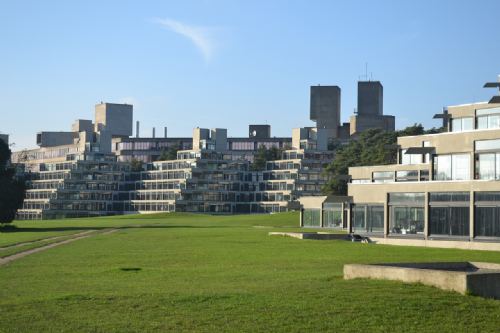Students Move From Iconic UEA Ziggurats

The ongoing saga regarding reinforced autoclave aerated concrete (RAAC) in public buildings is now impacting student accommodation in Norwich.
Young people have been moved out of the University of East Anglia (UEA)’s famous Ziggurats while further investigations are carried out.
The move comes after many schools in the country have been told to close part or all of their buildings due to possible fears of RAAC sections collapsing.
The concrete, once heralded as a wonder material, has been found to be porous, leading to deterioration and danger of collapse over time.
The Ziggurats, which have won numerous architectural awards, are believed to contain RAAC and are being closed in line with new government guidance on the material.
Around 750 student rooms have been impacted and students have been allocated alternative on-campus or city centre accommodation.
UEA vice-chancellor Prof David Maguire said: “We realise that this could be a stressful time for both the students being moved and those due to arrive and return to campus in the coming weeks.
“We will be communicating with them directly over the coming days so that they’re aware of the alternative accommodation and to make sure they have everything they need to settle into life here at UEA.
“There will be no additional costs to students as a result of any changes. Additional support will be offered to all students who need it and we will share further information when it is available.”
The Grade II-listed Ziggurats were designed by eminent British architect Denys Lasdun to echo “vineyards in France…or a rocky outcrop on a slope.”
Their Brutalist design earned them eighth spot in the top 10 of best UK university architecture by the Architect’s Journal.
A ziggurat is an ancient Mesopotamian temple tower with a pyramidal structure built in successive stages with outside staircases and a shrine at the top.
Chair of the board at the Royal Institute of British Architects (RIBA), Jack Pringle, said:
“RIBA has long voiced serious concerns about the condition of school buildings. Our 2016 study – Better Spaces for Learning – highlighted that pupils and teachers are struggling to learn and teach in conditions damaging to their health and education.
“Alongside funding the mitigation of immediate safety risks through an industry-led task force, the government must publish the Condition of Schools Survey without delay, to expose the full scale of this problem.
“It’s also clear however that RAAC failure goes beyond schools, and that’s why the government must undertake an urgent audit of public buildings to identify how widespread it really is.
“Once immediate safety risks have been resolved, we need to look to the future.
“We must make sure this doesn’t happen again – learn from mistakes, ensure all products are safe, and have a programme of work to upgrade buildings as they reach the end of their life.
“The mobilisation of private finance will be key to achieving this.”